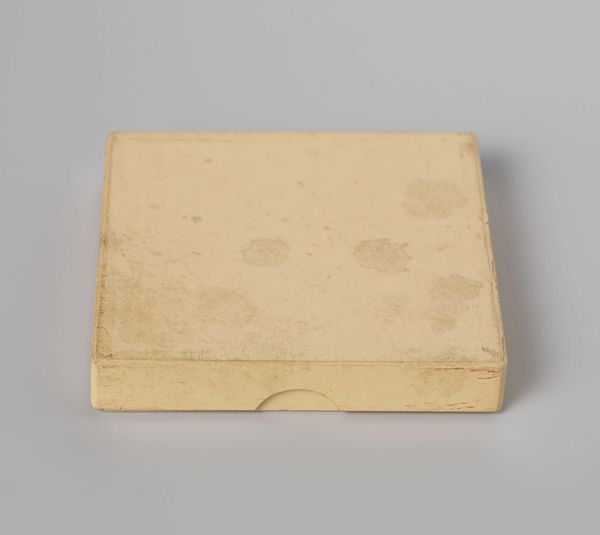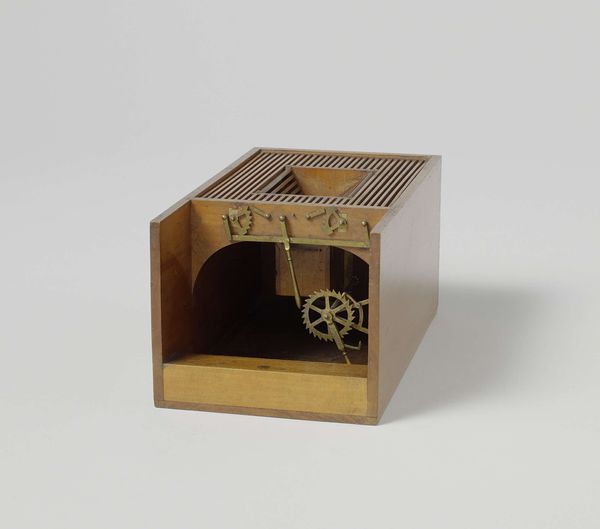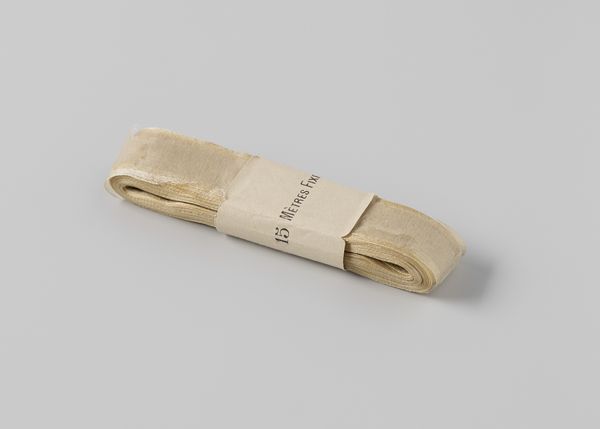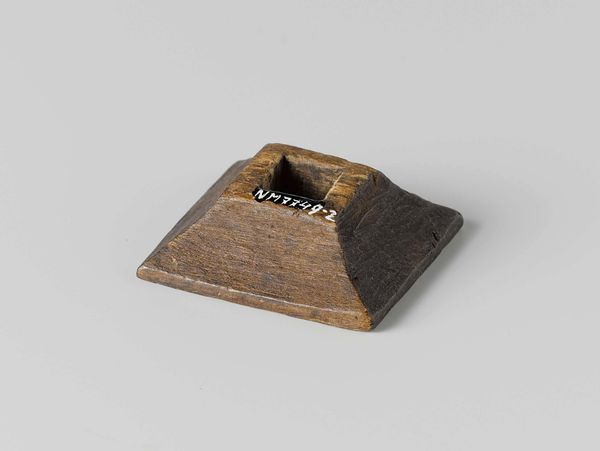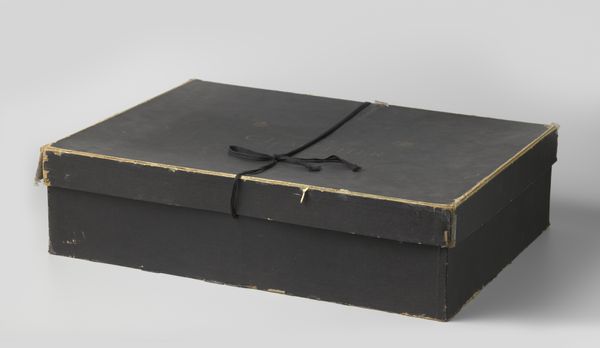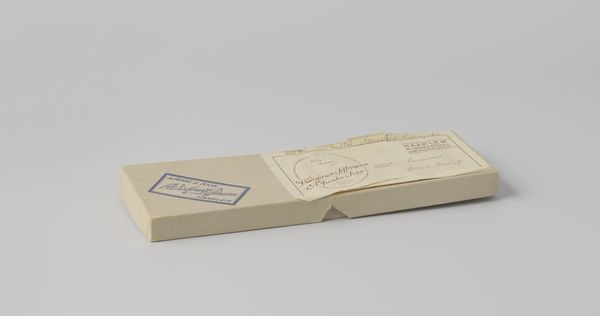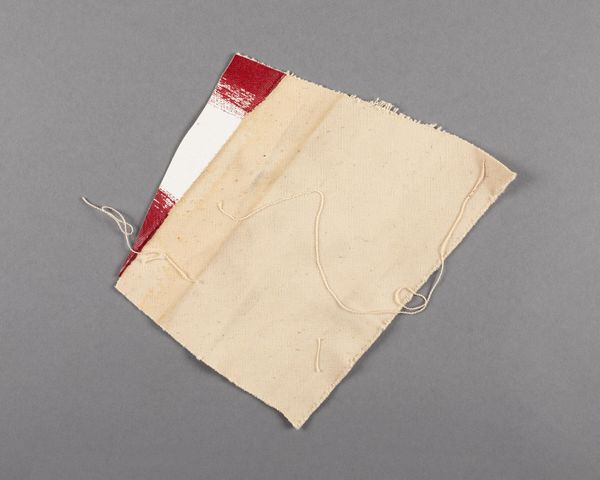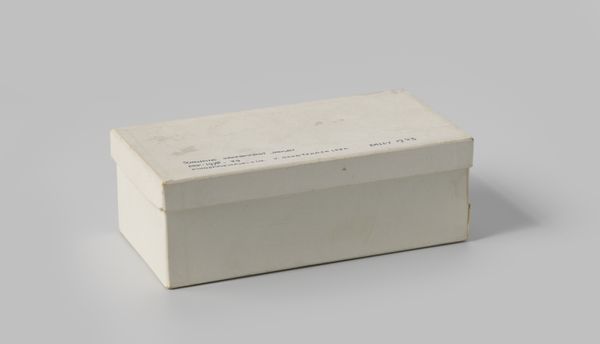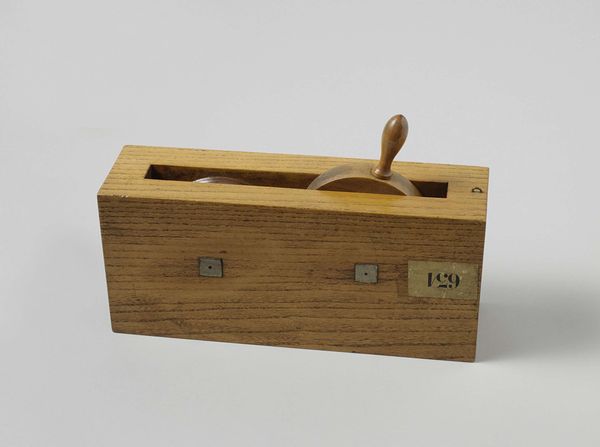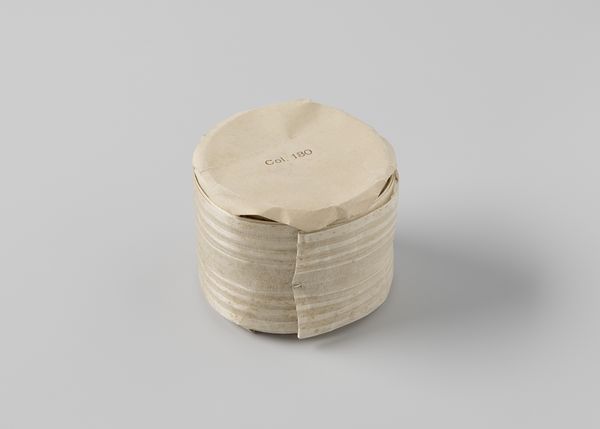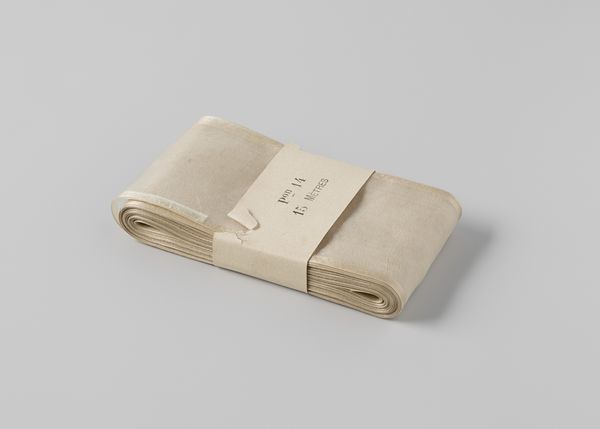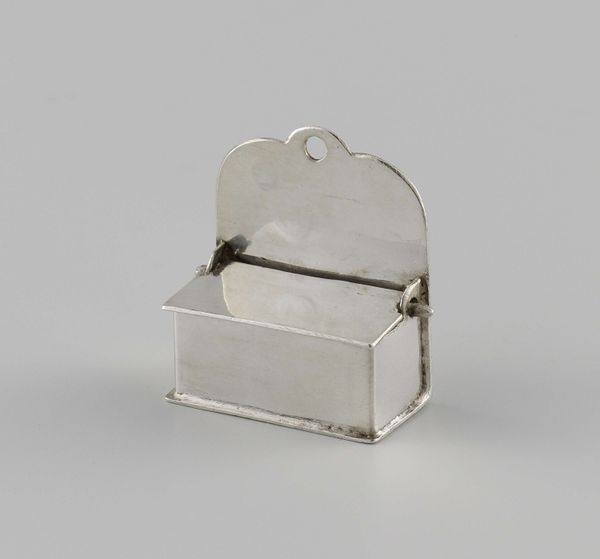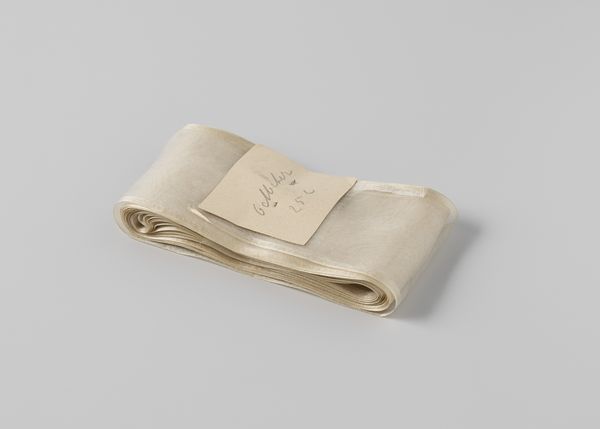
Laken, fragment, en een stukje gebreide wol genomen uit het graf van Cornelis Evertsen 17th century
0:00
0:00
textile, paper
#
dutch-golden-age
#
textile
#
paper
Dimensions: length 8 cm, width 4 cm
Copyright: Rijks Museum: Open Domain
Curator: Immediately, the muted tones give a solemn impression. It’s a rather humble presentation, really. Editor: Indeed. The piece, dated to the 17th century, is titled "Laken, fragment, en een stukje gebreide wol genomen uit het graf van Cornelis Evertsen"—which translates to "Cloth, fragment, and a piece of knitted wool taken from the grave of Cornelis Evertsen." It's by an anonymous artist. Curator: So, we’re looking at grave relics. Fascinating. I imagine these fragments held considerable emotional weight for whoever preserved them. Remnants become symbols—not just of a person, but of mortality, of time. Editor: Exactly. In Dutch Golden Age society, the rituals surrounding death were intensely meaningful, deeply interwoven with societal and religious structures. Curator: It also makes you think about how class affected commemoration, right? While elaborate portraits might memorialize the elite, something like this is intensely personal. It feels… democratic. Anyone could collect and cherish these bits. Editor: It prompts critical questions about accessibility in memorialization, but what are the ethics of possessing remnants taken directly from a grave? Isn’t it disrespectful? Did this appropriation disrupt customary practices in any way? The act itself is a gesture of privilege. Curator: An important consideration. On another note, note how deliberately arranged these relics seem to be placed on a blank canvas: almost as if creating a reliquary right there on the paper. This careful presentation reinforces the inherent importance assigned to each piece. A curated moment for later discovery. Editor: A vital nuance—particularly concerning the power dynamics embedded within the very collection and conservation. But I see, these fragile remnants now preserved—cloth and paper now co-mingling over the ages as silent artifacts for further exploration! Curator: Certainly, delving into the multilayered readings here only affirms the work’s impact on memory and meaning. Editor: Absolutely. It leaves us reflecting on how profoundly our perspectives inform not just an artwork but how such artifacts are preserved, shared and interpreted over centuries.
Comments
No comments
Be the first to comment and join the conversation on the ultimate creative platform.
